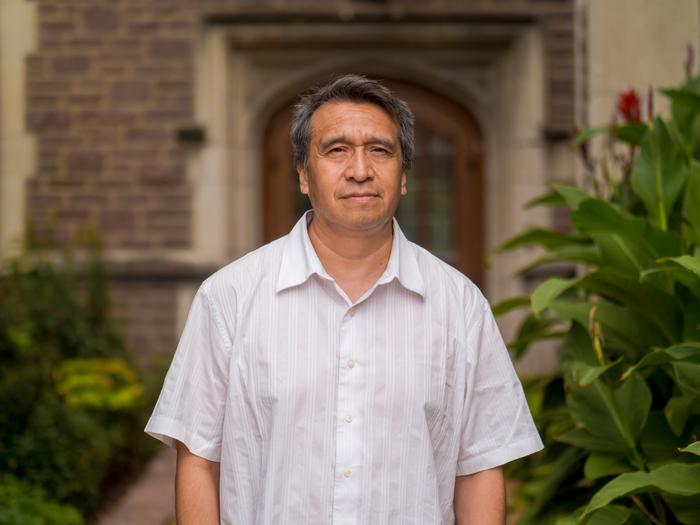In humans and other animals, signals from a central circadian clock in the brain generate the seasonal and daily rhythms of life. They help the body to prepare for expected changes in the environment and also optimize when to sleep, eat and do other daily activities.

Credit: Washington University in St. Louis
In humans and other animals, signals from a central circadian clock in the brain generate the seasonal and daily rhythms of life. They help the body to prepare for expected changes in the environment and also optimize when to sleep, eat and do other daily activities.
Scientists at Washington University in St. Louis are working out the particulars of how our internal biological clocks keep time. Their new research, published July 24 in the Proceedings of the National Academy of Sciences, helps answer longstanding questions about how circadian rhythms are generated and maintained.
In all mammals, the signals for circadian rhythms come from a small part of the brain called the suprachiasmatic nucleus, or SCN. Several previous studies from WashU and other institutions have attempted to determine if a neurotransmitter called GABA plays a role in synchronizing circadian rhythms among individual SCN neurons. However, the role of GABA in the SCN had remained unclear.
“In the past, we have published data on pharmacological blocking of the GABA system and found only modest increases in synchrony among SCN cells,” said Daniel Granados-Fuentes, a research scientist in Arts & Sciences and first author of the new study.
The chemical interventions that he and other scientists introduced didn’t seem to change the way that neurons in the SCN fired that much, or to affect circadian regulation of actual behavior in mice, either.
So Granados-Fuentes and his team members took a different approach. The researchers changed the expression of two kinds of GABA receptors to figure out if receptor density had any impact on synchrony or behavior.
“Tuning the number of receptors is considered to be important to regulate physiological processes like learning and memory, but not circadian rhythms,” Granados-Fuentes said. But in this case, changing the density of either γ2 or δ GABA receptors had a dramatic effect.
Reducing or mutating these receptors in the SCN of mice decreased the amplitude of their circadian rhythms to one-third. The mice in this study increased their daytime wheel-running and reduced their normal nocturnal running.
The researchers also found that reduction or mutation of either γ2 or δ GABA receptors halved the synchrony among, and amplitude of, circadian SCN cells as measured by firing rate or protein expression in vitro.
Overexpression of either of two GABA receptor types compensated for the loss of the other, suggesting that these two receptors can function in a similar way in the SCN, even though they have been described to mediate different physiological processes, Granados-Fuentes said.
Understanding circadian rhythms is important because people can suffer many negative consequences if these rhythms get disrupted. They can experience daytime fatigue, changes in hormone profiles, gastrointestinal issues, changes in mood and more.
“These findings open a possibility to understand if changes in the density of GABA receptors are important to regulate seasonal responses, for example how animals in nature respond to summer when days are long or winter when days are short,” Granados-Fuentes said.
Granados-Fuentes works in the laboratory of biologist Erik Herzog, the Viktor Hamburger Distinguished Professor in Arts & Sciences and a co-author of this study. Steven Mennerick, the John P. Feighner Professor of Neuropsychopharmacology at Washington University School of Medicine and a professor of psychiatry and of neuroscience, is a collaborator and co-author.
This research helped lead to a new grant from the National Institute of Neurological Disorders and Stroke, part of the National Institutes of Health (NIH), for the Herzog laboratory with collaborators in WashU’s McKelvey School of Engineering and at Saint Louis University.
Research reported in this publication was supported by a grant from the NINDS (RO1NS121161). The study authors also thank the Taylor Family Institute for Innovative Psychiatric Research for support.
Journal
Proceedings of the National Academy of Sciences
Article Title
GABAA receptor subunit composition regulates circadian rhythms in rest–wake and synchrony among cells in the suprachiasmatic nucleus
Article Publication Date
26-Jul-2024



